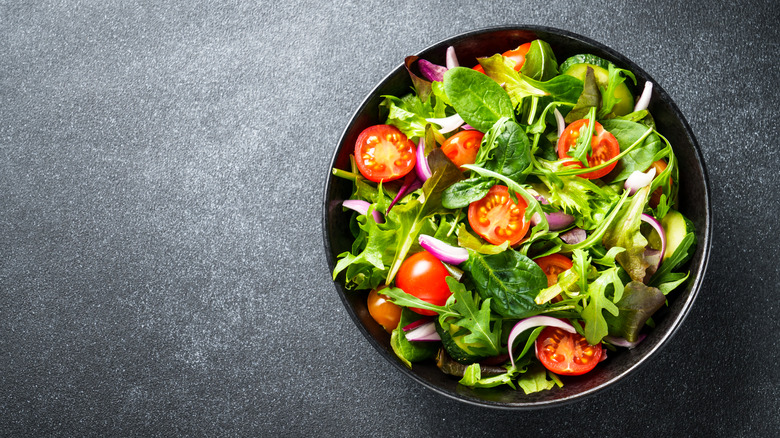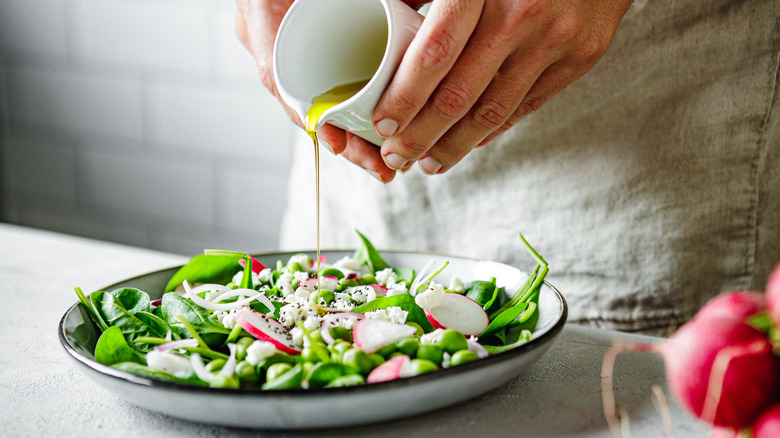Your Salad Might Be Soggy From One Salting Mistake
Adding a pinch of salt to your salad (both the base and the dressing) is all it takes to breathe new life into a bland and lackluster bowl of leafy greens, imbuing it with fresh brightness and vibrancy. Choose the right type of salt (like Maldon, for instance) and it can even add some much-needed crunch. But when you add that salt makes all the difference. Salt should only be included at the very last minute — right before you eat the salad. Sprinkle it any sooner, and the same flavorful seasoning can turn your salad into a soggy, watery mess.
Fruits and vegetables have a firm and crunchy texture because of turgor pressure, which keeps plant cells stiff, rigid, and sturdy by filling them with water. Salt, however, is hydrophilic, meaning it attracts water. When sprinkled over fruits and vegetables, it draws out the water present inside the plant cells, causing it to rise to the salty surface in a process known as osmosis. The loss of water causes fruits and vegetables to collapse and lose their firm structure — hence the sogginess.
Moreover, the water that salt draws out can lead to condensation if the salad is packed in an airtight container. This exposes your salad to moisture, which not only further contributes to mushiness, but can also cause greens to decompose, rot, and spoil quickly. Moral of the story? Don't salt your salad ahead of time.
Tips to keep your salad from turning limp and soggy
Salt is one of the most common culprits behind a soggy salad, but it's not the only mistake that could ruin your greens. Another thing to avoid is dressing your salad in advance. For one, dressing is a source of moisture that can cause your salad to get oversaturated. Plus, it usually contains salt too. Often, dressings also feature acids like citrus juice that can compromise the integrity of fragile leafy greens, causing those flavorful make-ahead salads to go limp just a day later. So, only pour in the dressing moments before you eat it.
Make sure that all the ingredients you're adding to the salad are entirely dry — you don't want lingering droplets of water softening your crunchy vegetables. If you're making a salad ahead of time and plan to store it for a few days, consider leaving out ingredients like cucumbers and tomatoes that are particularly aqueous and watery. These will eventually make the entire salad soggy, which can be a big meal prep mistake.
The order in which you add ingredients to the salad can contribute to mushiness, too. For example, wet and heavy ingredients like vegetables are best layered at the very bottom of the salad, with leafy greens and herbs at the top. This will prevent the more fragile and tender components from getting crushed under all the weight, ultimately protecting the overall integrity of your salad.


